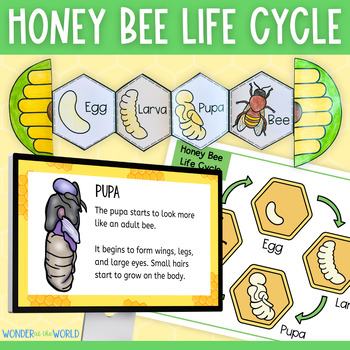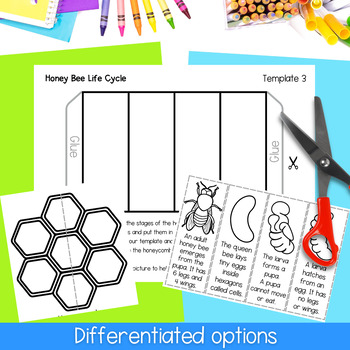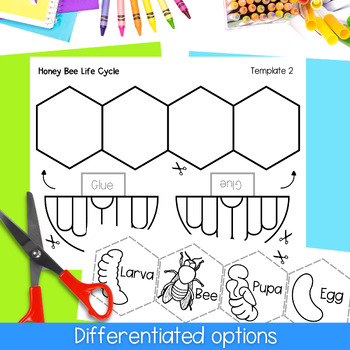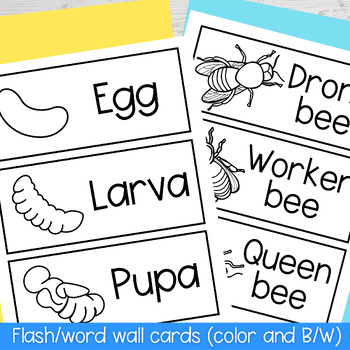Life cycle of a honey bee slide show lesson and sequencing activity
- Zip
- Google Apps™

Products in this Bundle (3)
Description
Introduce the amazing life cycle of a honey bee with this slideshow and foldable activity bundle. This resource has a fun presentation detailing the life cycle of a honey bee from egg to adult bee (as a PowerPoint and in Google Slides) and a printable activity for students to sequence the life cycle stages on a foldout template.
Use to support a science lesson on honeybees, insects or bug life cycles, or for World Bee Day in May.
The presentation (Included as Google Slides and PowerPoint)
The 25-slide presentation is full of real photos of honey bees and clear, child-friendly clip art images. It takes students on the life cycle journey from egg, to larva, pupa, and finally the adult honey bee. It includes some simple information about the 3 types of adult bee (worker, drone, and queen) as well as some of the threats to honey bee survival.
The body text of the presentation can be edited if you need to make any adjustments for your students' needs.
The printables
Following the presentation, students can use the printable templates to make a foldout. There are 3 template options for children to color, sequence the life cycle stages, glue, cut, and fold. These are great for interactive science notebooks, or for a fun assessment to check understanding.
The PDF also includes a color poster of the life cycle, flash/word wall cards, a label the body parts cut-and-paste worksheet, and 3 mazes.
Please note, the PDF is NOT editable.
US and UK versions of the file are included.





